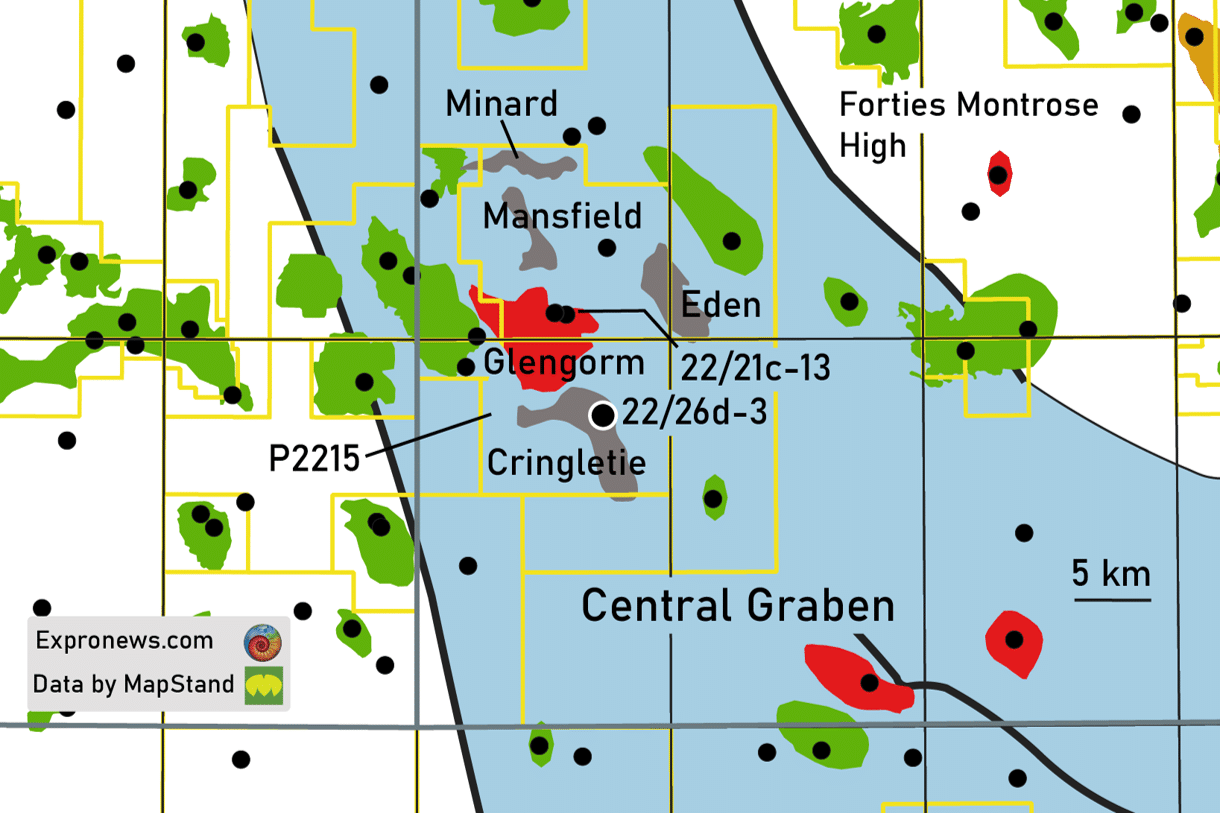Last week, CNOOC and partners Energean (25%) and Total (25%) spudded the first appraisal well on the Glengorm discovery.
Announced early 2019, The Glengorm find was hailed as the most important UKCS discovery in years, with recoverable resources cited to be in the order of 250 MMboe. This is very close to the P10 case of 260 MMboe recoverable as assigned by Maersk to the Glengorm prospect before it was relinquished by the Danes in 2014.
The reason Maersk gave up the licence covering the Glengorm and associated prospects was driven by concerns about the integrity of the seals, as shown by some nearby exploration wells. Nexen, and later CNOOC following the takeover, persisted and found the gas-condensate field with 22/21c-13 following two failed attempts.
So it is almost two years later that the second well (22/26d-3) is now on its way to further appraise the area. When looking at the surface position of the well, it looks likely though that 22/26d-3 is not appraising the Glengorm accumulation, but rather trying to prove hydrocarbons in the Cringletie prospect to the immediate southeast.
Are Glengorm and Cringletie now part of the same accumulation?
It may be that evaluation of the 22/21c-13 discovery well led to a deepening of the postulated contact, which may have caused Glengorm and Cringletie to become one accumulation instead.
However, when looking at a seismic line presented in the Maersk relinquishment report, the Cringletie prospect does seem to be another separate bump in the Fulmar, requiring a significant deepening of the contact to connect the two. Knowing that the seismic line doesn’t fully capture the Cringletie prospect though, patience is required before this will become apparent.

Reservoirs
The main target reservoirs in Glengorm were Upper Jurassic shallow marine Fulmar sands and the overlying turbiditic intra-Heather sandstones, with the latter probably of more importance given the higher position within the hydrocarbon column. It is expected that similar reservoirs form the main target for 22/21c-13.
More prospects to be drilled
In addition to the Cringletie prospect, which was estimated by Maersk to contain similar volumes as Glengorm, other Upper Jurassic prospects have also been identified in the area (Minard, Eden and Mansfield). In other words, if Cringletie proves a success there is clear momentum for an extensive near-field exploration campaign.
It is good news that a poor year in terms of UKCS drilling ends with the spud of an exciting appraisal well.
HENK KOMBRINK





